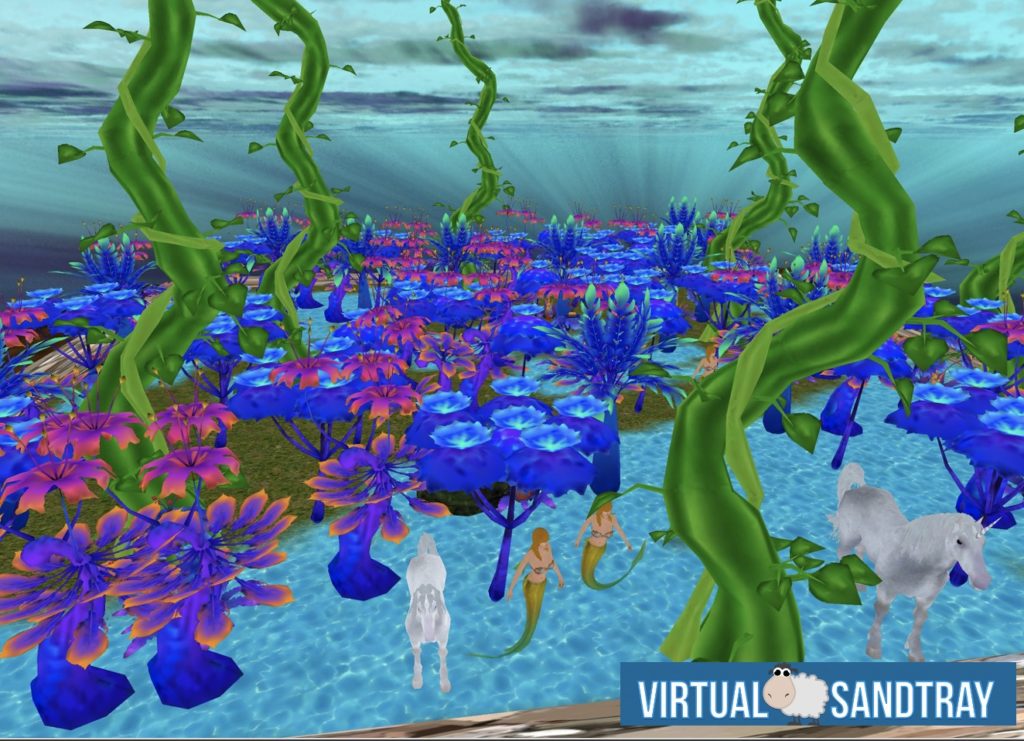Virtual Sandtray®© Storytelling Technique

By Jessica Stone, Ph.D., RPT-S
Storytelling has a rich, vast history. Passed down from generation to generation, stories have informed, taught, warned, expressed, and so much more. Utilizing storytelling in therapy has been highlighted in everything from narrative therapies to play therapy to bibliotherapy. When integrating storytelling into therapy it is important to have a variety of ways for the client to express themselves. People are different, their stories are different, and how they tell their stories should respect and reflect such differences.
“Each individual owns their own story, and any effective helper knows this” (Lyons, 2019, para 4).
Storytelling
Storytelling describes the social and cultural activity of sharing stories, sometimes with improvisation, theatrics or embellishment. Every culture has its own stories or narratives, which are shared as a means of entertainment, education, cultural preservation or instilling moral values (Wikipedia, 2020, para 1).
Storytelling predates writing. The earliest forms of storytelling were usually oral combined with gestures and expressions. In addition to being part of religious rituals, some archaeologists believe rock art may have served as a form of storytelling for many ancient cultures.[2] The Australian aboriginal people painted symbols from stories on cave walls as a means of helping the storyteller remember the story. The story was then told using a combination of oral narrative, music, rock art and dance, which bring understanding and meaning of human existence through remembrance and enactment of stories.[3] People have used the carved trunks of living trees and ephemeral media (such as sand and leaves) to record stories in pictures or with writing. Complex forms of tattooing may also represent stories, with information about genealogy, affiliation and social status.[4]
With the advent of writing and the use of stable, portable media, stories were recorded, transcribed and shared over wide regions of the world. Stories have been carved, scratched, painted, printed or inked onto wood or bamboo, ivory and other bones, pottery, clay tablets, stone, palm-leaf books, skins (parchment), bark cloth, paper, silk, canvas and other textiles, recorded on film and stored electronically in digital form. Oral stories continue to be created, improvisationally by impromptu storytellers, as well as committed to memory and passed from generation to generation, despite the increasing popularity of written and televised media in much of the world.
(Wikipedia, 2020, para 3-4)
Sand Storytelling
Telling stories in safe, non-threatening, projective, creative, even non-verbal ways can be important parts of mental health treatment. Sand therapies (tray and play) can allow clients to express both conscious and sub-conscious experiences, concerns, self-and other- perceptions and so much more. Many sand therapists utilize their sand tools to allow the space and environment for people to express such stories. Some have even formalized the process, such as Lara Kazsa and her SandStory Therapy® technique. “SandStory Therapy® is a gentle and safe way of working therapeutically with sand and symbols within a contained sandtray that offers clients the opportunity to tell their ‘story in the sand’.” (Kazsa, 2020, para 5).
Virtual Sandtray Storytelling
The Virtual Sandtray allows clients to access the powerful process of sand therapies both in person and via telehealth. This tool expands the traditional sand therapies to include digital native’s culture, interests, and knowledge, while also expanding the ways one’s world can be depicted. Want to have a dragon who can fly? A house that is levitated/floating? A forboding sky or lava under the surface? You can do all of this and more in the Virtual Sandtray.
One technique – Virtual Sandtray Storytelling – can be used in person and via telehealth in the remote feature. Starting with an empty tray of sand, the person chosen to go first (either the client or therapist in individual therapy or different members of a group or family) chooses 5 models (miniature/item/symbol, etc.) and buries them in the sand. The other person looks away. When all 5 are buried, the other person re-engages and looks for the items by digging in the sand. Once all 5 items are found, the person then tells a story about the items. This is then repeated by the next person and so forth. The number of items can be altered, especially for younger children, as needed and appropriate per the client’s needs. Advanced VSA Storytelling includes changing the liquid layer and/or skybox to add an additional mood element for the person to incorporate into the story.
Have fun!
References
Kasza, L. (2020). What is Sandstory therapy? https://www.larakasza.com/sandstory-therapy
Lyons, J. (2019, July). One person, one story, one CANS/ANSA. https://tcomconversations.org/2019/07/17/one-person-one-story-one-cans-ansa/
Wikipedia (2020, December). Storytelling. https://en.wikipedia.org/wiki/Storytelling